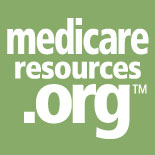House|Senate
111th Congress, Vote 909; House of Representatives #3961
Medicare Physician Payment Reform Act of 2009
Official Title: An Act to extend expiring provisions of the USA PATRIOT Improvement and Reauthorization Act of 2005 and Intelligence Reform and Terrorism Prevention Act of 2004 until February 28, 2011.
HR 3961 Revising Medicare Physician Fee Schedules, Reinstatement of PAYGO
Passed by House Nov. 19, 2009
Not acted upon in Senate
Synopsis: This bill, supported by many Democrats, senior groups and physician organizations, would have changed the way physicians are paid under Medicare by adjusting the formula that Congress is supposed to use when updating annual payments to physicians.
The Balanced Budget Act of 1997 created the "Sustainable Growth Rate" (SGR), a formula designed to make sure that total spending on Medicare physicians' services didn't grow too fast. The SGR is based on a number of factors, including changes in physicians costs (such as rent, staff and supplies), changes in the number of Medicare fee-for-service beneficiaries, and the rate of growth in the per capita gross domestic product, calculated as a 10-year moving average. If Medicare's payments to physicians exceeded the SGR target, the update for a future year would be cut in order to bring spending back in line with the SGR.
During the first few years, the formula appeared to be working. From 1997 through 2000, GDP grew by more than 4 percent a year – faster than Medicare payments to physicians. But beginning in 2000, economic growth slowed, and as a result Medicare's outlays to physicians grew faster than GDP. This meant that in 2002, the formula called for cutting fees for physicians' services by 4.8 percent, and Congress did just that.
Physicians protested – as did seniors who feared they were going to lose their doctors. Congress listened, and in the years that followed, legislators refrained from slicing physicians' fees, even though GDP growth remained sluggish.
Year after year the SGR continued to call for cuts rather than increases. But each year Congress simply kicked the can down the road, voting to postpone the cuts, hoping that in the future, the economy would pick up, the SGR would call for raising physician's fees, and over time, things would work out.
This didn't happen. Instead, the postponed cuts continued to pile up, until by 2011, the formula called for slashing payments to physicians by 21 percent. If this happened, observers warned, many physicians might well stop taking Medicare patients.
HR 3961 was designed to create a new base for the Sustainable Growth Rate for 2011 and later years, by making what Medicare actually spent on physicians' services in 2009 the new benchmark. The Senate refused to consider the bill and so in December 2010 Congress approved another temporary "doc fix" that once again postponed the SGR cut that has been looming for years. Many observers believe that legislators will never let such a large across-the board cut take effect.
Under the health care reform signed in 2010, the Secretary of Health and Human services now has the power to lower payments for services that are "overvalued" while lifting reimbursements for services that are "undervalued." This approach is favored by those who believe that changes should be made with a scalpel, not an axe.
Why supporters pushed for this bill
- The Obama administration favored the bill, in part because it believed that Congress would never apply the SGR. A new formula was needed.
- They argued that the fact that GDP growth has slowed was not a reason to reduce Medicare payments to physicians. While the economy might not be growing, the cost of renting an office, the cost of malpractice insurance and the cost of labor had continued to rise.
- The President's advisors also liked the fact that the legislation would raise Medicare reimbursements to primary care physicians for the time they spent listening to and talking to patients. The administration felt that the existing system was weighted too heavily toward paying for procedures such as tests, surgeries and joint replacement rather than rewarding physicians for counseling patients and listening to patients descriptions of their symptoms.
Why opponents tried to stop the bill
- Opponents complained the bill would be too expensive, arguing that it would hike Medicare spending by about $195 billion over ten years.
- Those who voted against the legislation also warned that if it passed, Medicare beneficiaries would wind up paying more out of pocket.
11/19/2009 Status: House passed More: select a member to see his or her other key Medicare votes.
Not Voting (8) D George Miller CA D Charles Melancon LA D Edolphus Towns NY D Patrick Kennedy RI R Henry Brown SC R Kevin Brady TX R John Carter TX R Michael McCaul TX



